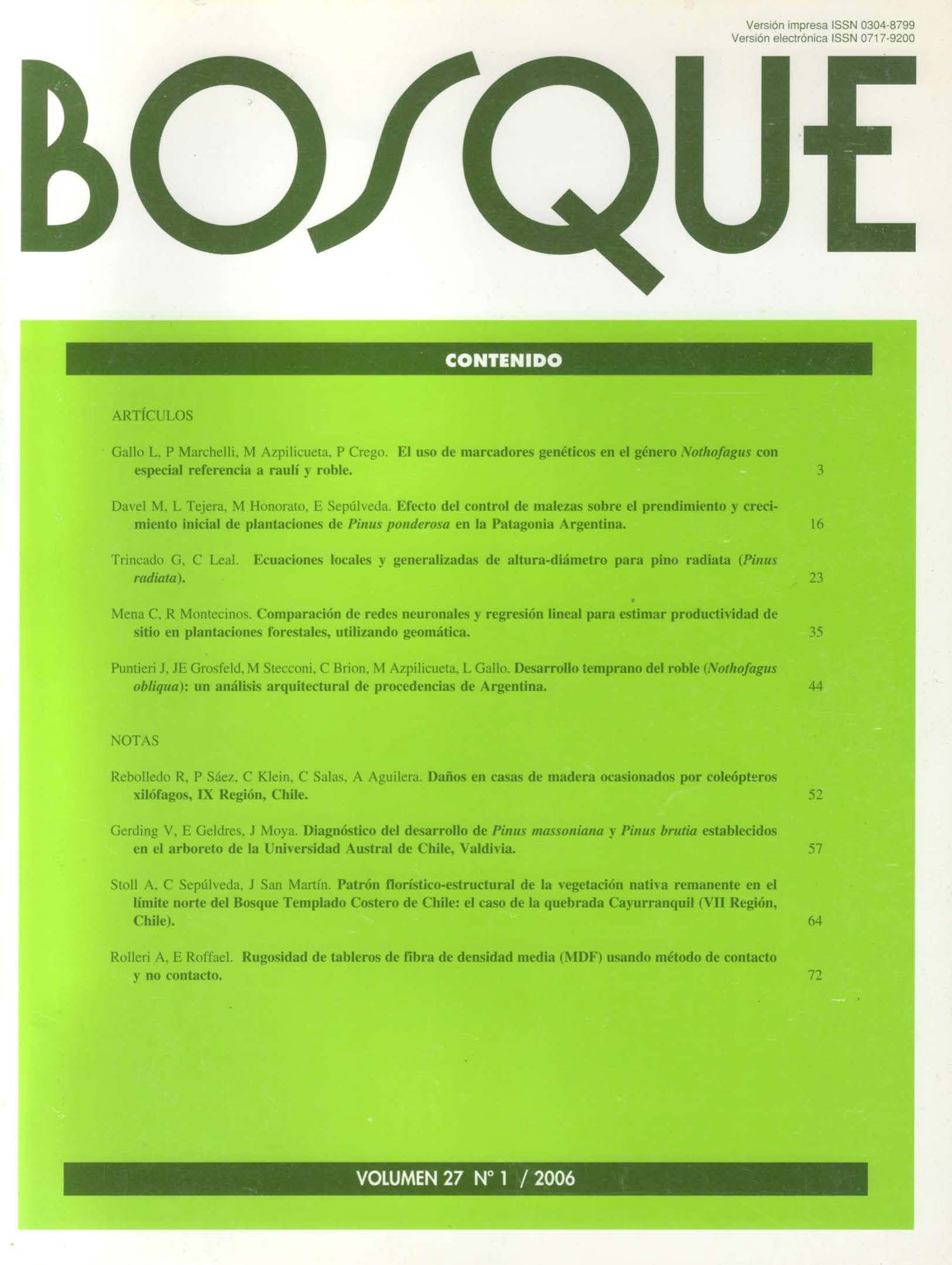Main Article Content
Apr 28, 2006
Abstract
The architectural development of three-year-old seedlings of Nothofagus obliqua under nursery conditions was studied. The seedlings were grown from seeds collected from five provenances within the natural distribution area of this species in Argentina. The length, number of nodes and basal diameter of the main axis’ annual shoots were registered for 40 or more seedlings per provenance. The first-year shoot of all seedlings consisted on one extension unit (EU); second-year shoots had one or two EU and third-year shoots one, two or three EU. The development of a second or a third EU always resulted from the death of the apex of the first or second EU respectively. The most evident consequences of the existence of more than one EU in one year were: (a) greater length and number of nodes per shoot in that year, (b) a thicker stem at ground level and (c) a longer extension period. Plants from different provenances differed in the length of the first-year shoot and the proportion of second- and third-year shoots with one or more than one EU.


